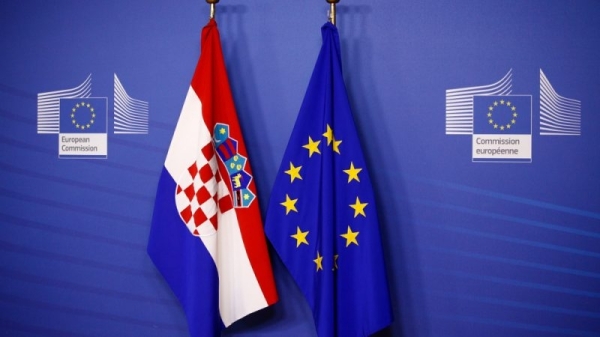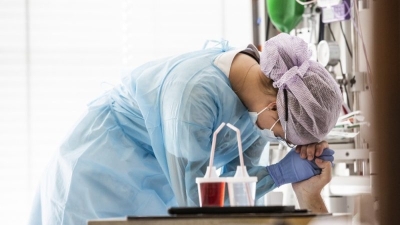Interview: Croatian EU funding highlights greening, digitalisation

Around 15,000 Croatian projects are set to benefit from EU funds from the 2014-2020 cycle, with more expected by the end of the decade, mostly focusing on green policies and digitalisation, presenting a great opportunity for the country, Regional Development and EU Funds Minister Sime Erlić told EURACTIV in an interview.
Erlic, one of the youngest ministers in the government of Prime Minister Andrej Plenkovic, is currently working on closing as much as possible of the projects from the 2014-2020 cycle while looking ahead to the next cycle 2021-2027.
Utilisation of the money from the previous cycle is about 80% or slightly more than €8 billion; the goal is to grab the rest of €2.5 billion from various EU funds until the end of the year.
In an interview for EURACTIV in his cabinet, Erlic stated that the real investment wave will affect the beneficiaries of EU funds from 2025. “It is a great opportunity for all users, entrepreneurs, counties, cities and municipalities to raise the level of Croatian standards”.
“An important part of the work of the Ministry and the entire system that is engaged in the withdrawal of European money is the detection, elimination and sanctioning of irregularities”, emphasised Erlić, who came to the ministerial position from the position of state secretary in the Ministry.
He also detailed new measures and calls for the public and private sectors and investments in less developed parts of the country, such as mountainous areas and islands.
Erlić said one of the key strategic goals is to withdraw the funds of the previous program period, 2014-2020, which are available until the end of the year, and the second strategic goal, from the point of view of EU funds, is to implement a new financial perspective, that is, to call for as many tenders as possible and start implementation and consumption.
“This is not simple because financial perspectives and instruments overlap. The National Recovery and Resilience Plan (NPOO) was also launched, which is also a challenge for existing capacities,” he added.
As for how much will be spent by the end of the year, Erlic said, “Every day, we closely monitor the execution and implementation of projects, and according to current estimates, we will spend all the funds available to us by the end of the year. We are talking about €10.7 billion of the previous financial envelope, which was increased to €11.33 billion for agriculture and rural development programs.”
However, some projects may not meet the deadline and will have to be completed afterwards at their own expense or hope of phasing in agreement with the Commission.
The Croatian government had huge funds available from the Solidarity Fund for reconstruction after two devastating earthquakes in Zagreb and Banovina, but it seems that a significant part of this grant money will not be used.
Furthermore, at the session of the Croatian Government in mid-April, it was announced that the possibility of obtaining €3.6 billion in loans from the EU as part of the National Recovery and Resilience Plan (NPOO), which will be used for reconstruction projects, for which solidarity funds were not used.
On this, Erlic said withdrawal from the Solidarity Fund has intensified, and Croatia was at the end of April at more than €766 million of spent funds out of the €1.03 billion available for both earthquakes. “We have reasons to expect that we will spend all the funds by June 30.”
In terms of earthquake-affected areas, a more complex approach requires multi-fund financing, some of which will be completed by June, while others will have to draw from other funds such as NPOO and cohesion funds.
As for Croatia’s weaknesses in obtaining EU funds, Erlic said there are systematic challenges, but as the country entered the EU just 10 years ago, it is somewhat expected.
“Since 2019, we have recorded a significant acceleration in disbursed funds, so we came from behind to 13th place in disbursed funds, as shown by European statistics. This means that we are overtaking other member states when it comes to payments, and we will probably manage to gain another place by the end of the year.”
The biggest challenge, he said, remains speeding up the processing of requests and disbursement of funds, including supervision, approval, paying out money and ensuring transparency.
“The challenge is positive, funds are never more available and this is the opportunity of the generation. I truly believe it is. We are facing a ten-year cycle of investments that we will realise and direct the country in a new direction.”
He added that over 70% of all public investments in Croatia come from European funds, and if we direct the investments wisely, “we will help Croatia to develop in an adequate way so that in the next decade, it will come even closer to the standard of the most developed countries.”
As for claims of a lack of transparency, Erlic denied them, “We constantly express how much funds have been spent by component, we monitor how much has been invested, how many calls there are, how many projects there are, what the indicators are. We have it all in our reports. “
As for the focus of projects and investments, Erlic said most of the funds – over 30% – are earmarked for green policies with many opportunities for entrepreneurs.
“The fact that EU funds tend to invest in the public system, its improvement and reforms should be taken into account. But we managed to fight for new investment instruments in entrepreneurship, and there will be more money than before, about two billion euros out of the total of 25.”
Most of the €9 billion in cohesion funds will also go towards green and digital, including smart development, research, entrepreneurship, renewable energy, the greening of industries, water and waste infrastructure and environmental protection, Erlic explains.
(Goran Ivanovic | EURACTIV.hr)
Read more with EURACTIV




